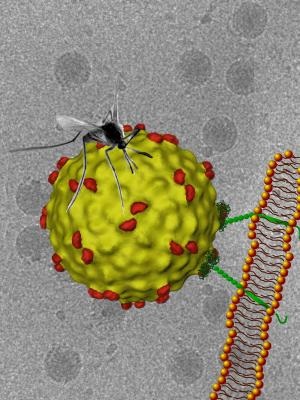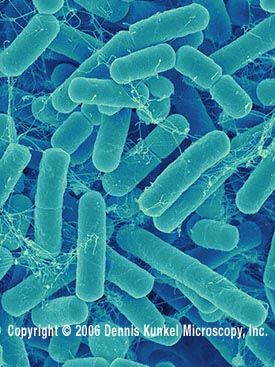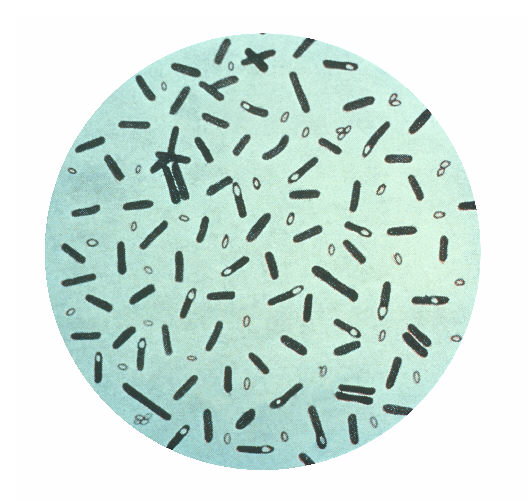



 Por Thaıs Moraes da Conceição, Naiara Miranda Rust, Ana Carolina Egypto Rosa Berbel, Nathalia Balthazar Martins, Carlos Antonio do Nascimento Santos, Andrea Thompson Da Poian e Luciana Barros de Arruda
Por Thaıs Moraes da Conceição, Naiara Miranda Rust, Ana Carolina Egypto Rosa Berbel, Nathalia Balthazar Martins, Carlos Antonio do Nascimento Santos, Andrea Thompson Da Poian e Luciana Barros de Arruda
A Dengue é a mais importante infecção humana viral causada por um artrópode e é responsável, anualmente, por 50-20 milhões de infecções e milhares de mortes. A resposta ao vírus da Dengue esta a associada a resposta inflamatória e alterações funcionais no endotélio vascular. Neste trabalho foi demonstrado que as células microvasculares cerebrais humanas endoteliais (HBMECs) são susceptíveis a infecção pelo vírus, induzindo o aparecimento do receptor RG-I.
A ativação de o RIG-I pelo vírus da Dengue faz parte do processo de patogenicidade através da modulação da produção de citocinas liberadas e da expressão de moléculas de adesão. Provavelmente este evento molecular contribui para o recrutamento de leucócitos e amplificação da resposta inflamatória.
ESSENTIAL ROLE OF RIG-I IN THE ACTIVATION OF ENDOTHELIAL CELLS BY DENGUE VIRUS
Thaıs Moraes da Conceição a, Naiara Miranda Rust b, Ana Carolina Egypto Rosa Berbel b, Nathalia Balthazar Martins c, Carlos Antonio do Nascimento Santos c , Andrea Thompson Da Poian a and Luciana Barros de Arruda b
A - Instituto de Bioquımica Medica Universidade Federal do Rio de Janeiro, CCS, Bloco E, lab. E-018 . Av. Carlos Chagas Filho, 373. Cidade Universita´ria, Rio de Janeiro, RJ, Brazil
B - Instituto de Microbiologia Paulo de Goes, Universidade Federal do Rio de Janeiro, CCS, Bloco I, lab. I-SS-048 . Av. Carlos Chagas Filho, 373. Cidade Universitária, Rio de Janeiro, RJ, Brazil
C - Programa de Bioengenharia, Instituto Nacional de Metrologia, Qualidade e Tecnologia (Inmetro), Rio de Janeiro, RJ, Brazil
Abstract
Dengue virus (DENV) infection is associated to exacerbated inflammatory response and structural and functional alterations in the vascular endothelium. However, the mechanisms underlying DENV-induced endothelial cell activation and their role in the inflammatory response were not investigated so far. We demonstrated that human brain microvascular endothelial cells (HBMECs) are susceptible to DENV infection, which induces the expression of the cytoplasmic pattern recognition receptor (PRR) RIG-I . Infection of HBMECs promoted an increase in the production of type I IFN and proinflammatory cytokines, which were abolished after RIG-I silencing. DENV-infected HBMECs also presented a higher ICAM-1 expression dependent on RIG-I activation as well. On the other hand, ablation of RIG-I did not interfere with virus replication. Our data suggest that RIG-I activation by DENV may participate in the disease pathogenesis through the modulation of cytokine release and expression of adhesion molecules,
probably contributing to leukocyte recruitment and amplification of the inflammatory response.
Referencia : Virology 435 (2013) 281–292
 Por Lobo LA, Jenkins AL, Jeffrey Smith C, Rocha ER.
Por Lobo LA, Jenkins AL, Jeffrey Smith C, Rocha ER.
Bacteroides fragilis é o patógeno oportunista isolado com maior frequência de infecções anaeróbicas. Há, entretanto, uma escassez de informações sobre os aspectos genéticos e moleculares da expressão gênica de seus fatores de virulência nas infecções intestinais. Um potencial mecanismo de virulência esta relacionado com a capacidade do B fragilis produzir hemolisinas.
Os resultados deste trabalho sugerem que as hemolisinas do B. fragilis são induzidas e reguladas diferencialmente in vivo. A estirpes parental e a mutante- hlyBA- atingiram níveis de aproximadamente 3–8 X 109 cfu/mL 1 dia após a infecção. No entanto, a estirpe mutante- hlyBA, após 8 dias de infecção diminuiu o número de células viáveis. Este é o primeiro estudo mostrando que a hemolisina HlyBA é um fator de virulência que desempenha um papel sobrevivência do na B. fragilis.
Expression of Bacteroides fragilis hemolysins in vivo and role of HlyBA in an intra-abdominal infection model
Lobo LA, Jenkins AL, Jeffrey Smith C, Rocha ER.
Department of Microbiology and Immunology, East Carolina University Brody School of Medicine, Greenville, North Carolina; Department of Medical Microbiology, Institute of Microbiology, Federal University of Rio de Janeiro, Rio de Janeiro, Brazil.
Abstract
Bacteroides fragilis is the most frequent opportunistic pathogen isolated from anaerobic infections. However, there is a paucity of information regarding the genetic and molecular aspects of gene expression of its virulence factors during extra-intestinal infections.
A potential virulence factor that has received little attention is the ability of B. fragilis to produce hemolysins. In this study, an implanted perforated table tennis "ping-pong" ball was used as an intra-abdominal artificial abscess model in the rat. This procedure provided sufficient infected exudate for gene expression studies in vivo. Real-time reverse transcription polymerase chain reaction (RT-PCR) was used to quantify the relative expression of hlyA, hlyB, hlyC, hlyD, hlyE, hlyF, hlyG, and hlyIII mRNAs. The hlyA mRNA was induced approximately sixfold after 4 days postinfection compared with the mRNA levels in the inoculum culture prior to infection. The hlyB mRNA increased approximately sixfold after 4 days and 12-fold after 8 days postinfection. Expression of hlyC mRNA increased sixfold after 1 day, 45-fold after 4 days, and 16-fold after 8 days postinfection, respectively. The hlyD and hlyE mRNAs were induced approximately 40-fold and 30-fold, respectively, after 4-days postinfection. The hlyF expression increased approximately threefold after 4-days postinfection. hlyG was induced approximately fivefold after 4 and 8 days postinfection. The hlyIII mRNA levels had a steady increase of approximately four-, eight-, and 12-fold following 1, 4, and 8 days postinfection, respectively. These findings suggest that B. fragilis hemolysins are induced and differentially regulated in vivo. Both parent and hlyBA mutant strains reached levels of approximately 3-8 × 10(9) cfu/mL after 1 day postinfection. However, the hlyBA mutant strain lost 2 logs in viable cell counts compared with the parent strain after 8 days postinfection. This is the first study showing HlyBA is a virulence factor which plays a role in B. fragilis survival in an intra-abdominal abscess model.
Referência:
 Por Caio T. C. C. Rachid, Adriana L. Santos,Marisa C. Piccolo,Fabiano C. Balieiro,Heitor L. C. Coutinho,Raquel S. Peixoto,James M. Tiedje, e Alexandre S. Rosado
Por Caio T. C. C. Rachid, Adriana L. Santos,Marisa C. Piccolo,Fabiano C. Balieiro,Heitor L. C. Coutinho,Raquel S. Peixoto,James M. Tiedje, e Alexandre S. Rosado
O cerrado brasileiro é um dos mais importantes reservatórios da biodiversidade do mundo. O cultivo da cana de açúcar está se expandindo neste bioma e estudos de como esta atividade agricola pode afetar as propriedades do solo e as comunidades nativas de bactérias do Cerrado são necessários. Neste estudo foi detectada uma redução da população bacteriana nos solos agrícolas quando comparado com as populações nativas do solo de cerrado. O cultivo de cana de açúcar levou a mudanças significativas na comunidade bacteriana, sendo que o filo Firmicutes e as Acidobacteria foram os grupos mais afetados.
Effect of Sugarcane Burning or Green Harvest Methods on the Brazilian Cerrado Soil Bacterial Community Structure
Caio T. C. C. Rachid, Adriana L. Santos,Marisa C. Piccolo,Fabiano C. Balieiro,Heitor L. C. Coutinho,Raquel S. Peixoto,James M. Tiedje, e Alexandre S. Rosado
1.Institute of Microbiology Paulo de Góes, Federal University of Rio de Janeiro, Rio de Janeiro, Rio de Janeiro, Brazil
2.Center for Nuclear Energy in Agriculture, Universidade de São Paulo, Piracicaba, São Paulo, Brazil,
3.Embrapa Solos, Rua Jardim Botânico, Rio de Janeiro, Rio de Janeiro, Brazil
The Brazilian Cerrado is one of the most important biodiversity reservoirs in the world. The sugarcane cultivation is expanding in this biome and necessitates the study of how it may impact the soil properties of the Cerrado. There is a lack of information especially about the impacts of different sugarcane management on the native bacterial communities of Cerrado soil. Therefore, our objective was to evaluate and compare the soil bacterial community structure of the Cerrado vegetation with two sugarcane systems.
Methods
We evaluated samples under native vegetation and the impact of the two most commonly used management strategies for sugarcane cultivation (burnt cane and green cane) on this diversity using pyrosequencing and quantitative PCR of the rrs gene (16S rRNA).
Results and Conclusions
Nineteen different phyla were identified, with Acidobacteria (≈35%), Proteobacteria (≈24%) and Actinobacteria (≈21%) being the most abundant. Many of the sequences were represented by few operational taxonomic units (OTUs, 3% of dissimilarity), which were found in all treatments. In contrast, there were very strong patterns of local selection, with many OTUs occurring only in one sample. Our results reveal a complex bacterial diversity, with a large fraction of microorganisms not yet described, reinforcing the importance of this biome. As possible sign of threat, the qPCR detected a reduction of the bacterial population in agricultural soils compared with native Cerrado soil communities. We conclude that sugarcane cultivation promoted significant structural changes in the soil bacterial community, with Firmicutes phylum and Acidobacteria classes being the groups most affected.
Referencia: Rachid CTCC, Santos AL, Piccolo MC, Balieiro FC, Coutinho HLC, et al. (2013) Effect of Sugarcane Burning or Green Harvest Methods on the Brazilian Cerrado Soil Bacterial Community Structure. PLoS ONE 8(3): e59342. doi:10.1371/journal.pone.0059342
